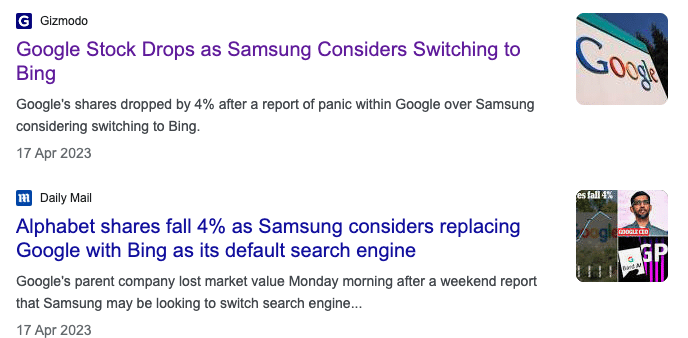Unlock the secret to skyrocketing your website’s success! Discover the ultimate guide on combining SEO and CRO strategies to achieve maximum results.
In this article, I’ll show you how to integrate SEO and CRO for maximum results.
I’ve been working as a digital marketing specialist for almost 20 years, and I’ve found that combining these two strategies is crucial for driving organic traffic and converting visitors into customers. By optimising your website for both search engines and conversions, you can achieve higher rankings and increase your conversion rates.
I’ll share key strategies, tools, and techniques that will help you successfully integrate SEO and CRO. Plus, I’ll show you how to measure and analyse the impact of this integration for continuous improvement.
Key Takeaways
- Integrating SEO and CRO is crucial for driving organic traffic and conversions.
- Conducting keyword research and optimising website content improves conversions.
- Analysing website data and user behaviour helps identify areas for improvement.
- Implementing A/B testing and tracking key metrics like conversion rates measure the effectiveness of integration.
The Importance of SEO and CRO Integration
You need to understand the importance of integrating SEO and CRO for maximum results.
SEO (Search Engine Optimisation) and CRO (Conversion Rate Optimisation) are two essential components of any successful digital marketing strategy. SEO focuses on improving your website’s visibility in search engine results, while CRO aims to increase the number of visitors who take a desired action on your site – aka conversions.
When SEO and CRO work together, they can create a powerful synergy that drives more organic traffic to your website and converts that traffic into customers or leads. By optimising your website for both search engines and user experience, you can ensure that your site not only ranks well in search results but also provides a seamless and persuasive user journey.
Data shows that integrating SEO and CRO can have a significant impact on your business. Studies have found that companies that combine SEO and CRO strategies experience higher conversion rates and increased revenue.
By aligning your keyword research, on-page optimization, and content strategy with your conversion goals, you can attract more qualified traffic and improve the likelihood of conversions.
In the next section, we will explore key strategies for combining SEO and CRO to maximise your results. These strategies will help you create a holistic approach to online marketing that leverages the power of both SEO and CRO to drive meaningful business outcomes.
Optimising Your Website for Search Engines and Conversions
When optimising your website, it’s important to combine strategies for search engine optimization (SEO) and conversion rate optimization (CRO) to achieve optimal visibility and drive more conversions.
By integrating these two approaches, you can ensure that your website not only attracts more traffic but also converts that traffic into valuable leads or sales.
Here are some of my key steps to optimise your website for both search engines and conversions:
-
Conduct keyword research:
Start by identifying relevant keywords that align with your target audience’s search intent. This will help you optimise your website’s content and meta tags effectively.
-
Improve website speed:
Website load time is a crucial factor for both SEO and CRO. Slow-loading websites not only rank lower in search engine results but also have higher bounce rates. Optimise your website’s performance by compressing images, minifying code, and leveraging browser caching.
-
Create compelling and relevant content:
High-quality content is essential for both SEO and CRO. Develop engaging and informative content that not only ranks well in search engine results but also resonates with your target audience and encourages them to take action.
-
Optimise landing pages:
Landing pages are critical for conversion optimization. Ensure that your landing pages are well-designed, visually appealing, and have clear call-to-action buttons that guide visitors towards the desired conversion goal.Additionally, utilising A/B testing can help you optimise your website for conversions.
By testing different variations of your website’s design, layout, and call-to-action buttons, you can identify which elements are most effective at driving conversions.
-
Data-driven decisions:
Analyse your website’s data to identify areas for improvement. Use tools like Google Analytics to track user behaviour, such as click-through rates, time spent on page, and conversion rates. This data can help you identify any bottlenecks in your conversion funnel and make informed decisions to optimise your website accordingly.
Measuring and Analysing the Impact of SEO and CRO Integration
You can measure and analyse the impact of integrating SEO and CRO by using various analytics tools and tracking key metrics such as organic traffic, conversion rate, and user engagement.
Here’s how you can effectively measure the impact of SEO and CRO integration:
Use Google Analytics to track organic traffic
By monitoring the organic traffic to your website, you can determine how well your SEO efforts are driving visitors to your site. An increase in organic traffic indicates that your SEO strategies are effective.
This is the first step as driving traffic to your website will generate enough insights of how the visitors are engaging with your content.
Track conversion rate
Conversion rate is a crucial metric that tells you how many visitors are taking the desired action on your website, such as making a purchase or filling out a form. By monitoring changes in conversion rate after implementing SEO and CRO strategies, you can gauge the effectiveness of your strategy.
Sometimes, one topic is great for generating traffic but does not convert. Leverage those pages to test different CTAs (Call to action), sometimes a visitor is not ready to buy but is willing to sign-up for a newsletter. (You can also use this traffic to create a remarketing campaign to this specific audience.)
Analyse user engagement metrics
Metrics like engagement rate, time on site, and page views per session provide insights into how engaged users are with your website. By analysing these metrics and comparing them before and after integrating SEO and CRO, you can assess the impact on user engagement.
Conduct A/B tests
This is really important and allows you to compare two versions of a webpage to determine which one performs better in terms of conversion rate. By conducting A/B tests before and after integrating SEO and CRO, you can quantify the impact on conversion optimisation.
Conclusion
In conclusion, integrating SEO and CRO is crucial for maximising results. By combining these two strategies, you can optimise your website for both search engines and conversions, leading to increased traffic and improved user experience.
Utilising tools and techniques such as keyword research, A/B testing, and user behaviour analysis will help you achieve success in your SEO and CRO integration efforts.
Most importantly, measuring and analysing the impact of this integration through data-driven insights will allow you to make informed decisions and continuously improve your website’s performance.
If you want to know more about how we can help your business increase its online presence and drive more conversions, get in touch to request a strategy call.

Max is the founder of ZBRA Marketing, a leading digital marketing agency based in Dorset,UK. With over 15 years of experience driving growth through marketing strategy, SEO, PPC and CRO, Max has worked with major global companies across diverse sectors in South America and Europe.
He takes a data-driven approach to creating tailored solutions that transform brands’ online presence and success.
Through ZBRA, Max provides strategic consulting and services including SEO, PPC, CRO and data analytics to help companies connect with their target audiences and accelerate their digital growth.

































